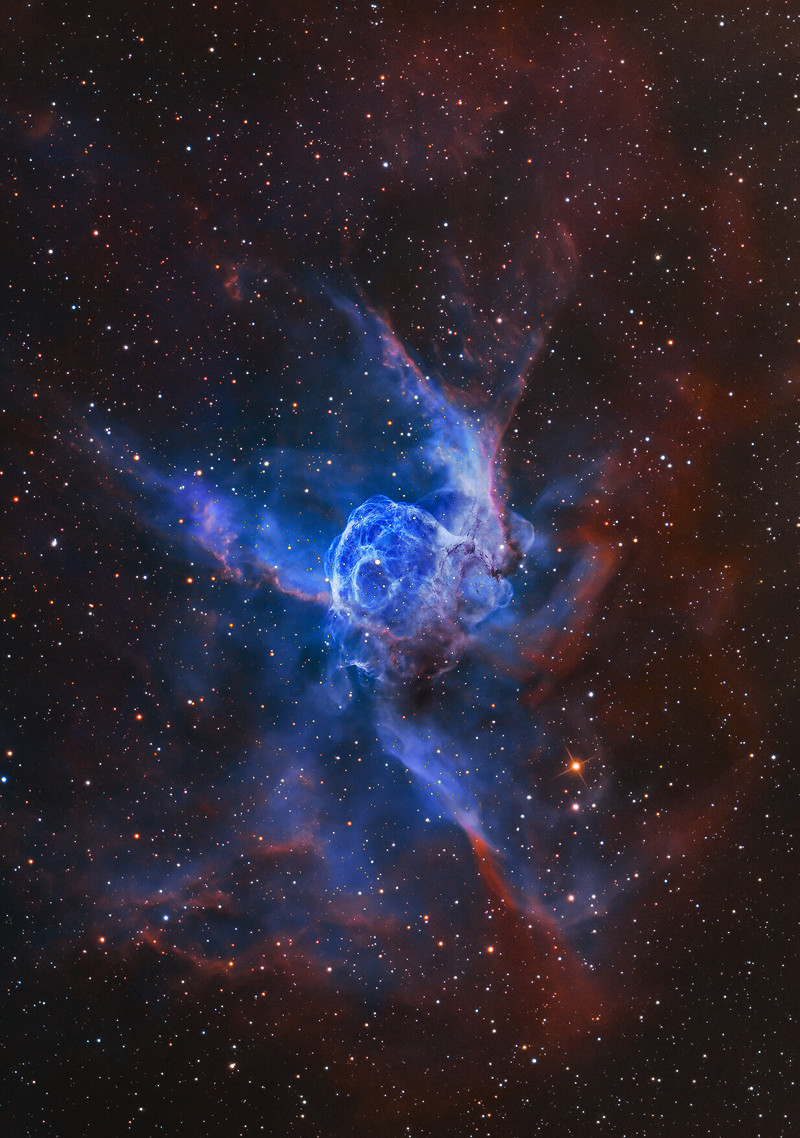Blog
Joseph Hilton “Nappy” Lamare (June 14, 1905 – May 8, 1988) was an American jazz banjoist, guitarist, and vocalist.
Lamare was born in New Orleans. He got his nickname from his friend, Eddie Miller, because he had curly hair. He started playing trumpet, then dropped it for banjo when he was thirteen. Weeks later, he was a member of the Midnight Serenaders. In his teens he worked with Sharkey Bonano, Monk Hazel, and Johnny Wiggs and in 1925 toured in California with Johnny Bayersdorffer. He recorded for the first time two years later with the New Orleans Owls.
He moved to New York City, playing mostly guitar instead of banjo. He became of a member of the Ben Pollack orchestra and sang on “Two Tickets to Georgia”. After Pollack left, Bob Crosby took over the orchestra in 1934, and Lamare remained with him until about 1942, performing in records and films, sometimes as a vocalist. After the orchestra dissolved again, he moved to California and spent the rest of his career playing Dixieland as leader of the Louisiana Levee Loungers, then the Straw Hat Strutters in the 1940s and 1950s. The Strutters appeared in the movie Hollywood Rhythm and on the weekly TV variety show Dixie Showboat. While heading the Riverboat Dandies, he injured his pinky finger and played bass guitar for five years until his finger healed.
more...This image, from ESO’s Very Large Telescope (VLT), shows a truly remarkable galaxy known as NGC 3621. To begin with, it is a pure-disc galaxy. Like other spirals, it has a flat disc permeated by dark lanes of material and with prominent spiral arms where young stars are forming in clusters (the blue dots seen in the image). But while most spiral galaxies have a central bulge — a large group of old stars packed in a compact, spheroidal region — NGC 3621 doesn’t. In this image, it is clear that there is simply a brightening to the centre, but no actual bulge like the one in NGC 6744 (eso1118), for example.
NGC 3621 is also interesting as it is believed to have an active supermassive black hole at its centre that is engulfing matter and producing radiation. This is somewhat unusual because most of these so-called active galactic nuclei exist in galaxies with prominent bulges. In this particular case, the supermassive black hole is thought to have a relatively small mass, of around 20 000 times that of the Sun.
Another interesting feature is that there are also thought to be two smaller black holes, with masses of a few thousand times that of the Sun, near the nucleus of the galaxy. Therefore, NGC 3621 is an extremely interesting object which, despite not having a central bulge, has a system of three black holes in its central region.
This galaxy is located in the constellation of Hydra (The Sea Snake) and can be seen with a moderate-sized telescope. This image, taken using B, V, and I filters with the FORS1 instrument on the powerful VLT, shows striking detail in this odd object and also reveals a multitude of background galaxies. A number of bright foreground stars that belong to our own Milky Way are also visible.

Attila Cornelius Zoller (June 13, 1927 – January 25, 1998) was a jazz guitarist born in Hungary. After World War II, he escaped the Soviet takeover of Hungary by fleeing through the mountains on foot into Austria. In 1959, he moved to the U.S., where he spent the rest of his life as a musician and teacher.
Zoller was born in Visegrád, Hungary in 1927. As a child, he learned violin from his father, a professional violinist. While in school, he played flugelhorn and bass before choosing guitar. He dropped out of school and played in jazz clubs in Budapest while Russia occupied Hungary. He fled Hungary in 1948 as the Soviet Union was establishing communist military rule. He escaped on foot, carrying his guitar through the mountains into Austria. He settled in Vienna, became an Austrian citizen, and started a jazz group with accordionist Vera Auer. In the 1950s, Zoller moved to Germany and played with German musicians Jutta Hipp and Hans Koller. When American jazz musicians passed through, such as Oscar Pettiford and Lee Konitz, they persuaded him to move to the United States. He moved to the U.S. after receiving a scholarship to the Lenox School of Jazz. One of his teachers was guitarist Jim Hall and his roommate was Ornette Coleman, who got him interested in free jazz.
From 1962–1965, Zoller performed in a group with flautist Herbie Mann, then Lee Konitz and Albert Mangelsdorff. Over the years, he played and recorded with Benny Goodman, Stan Getz, Red Norvo, Jimmy Raney, Herbie Hancock, Ron Carter, Shirley Scott, Cal Tjader, Jimi Hendrix, and in New York City jazz clubs in the 1960s with pianist Don Friedman
In 1974, he started the Attila Zoller Jazz Clinics in Vermont, later named the Vermont Jazz Center, where he taught until 1998. He invented a bi-directional pickup, designed strings and a signature guitar series. He performed with Tommy Flanagan and George Mraz in New York City three weeks before his death in 1998 in Townshend, Vermont.
more...William M. “Wild Bill” Moore (June 13, 1918 – August 1, 1983) was an American R&B and jazz tenor saxophone player. Moore earned a modest hit on the Hot R&B charts with “We’re Gonna Rock, We’re Gonna Roll”, which also was one of the earliest rock and roll records.
Moore was born in Detroit Michigan and began playing the alto saxophone at an early age. However, prior to his musical career, he was an amateur boxer, winning Michigan’s Golden Gloves light heavyweight championship in 1937, before briefly turning professional. By the early 1940s, Moore abandoned his boxing career in favor of music, and was inspired by musicians Chu Berry and Illinois Jacquet to switch to tenor saxophone. In 1944, he made his recording debut, accompanying Christine Chatman, the wife of Memphis Slim, for Decca Records. Between 1945 and 1947, Moore was performing and recording in Los Angeles with Slim Gaillard, Jack McVea, Big Joe Turner, Dexter Gordon, and played on Helen Humes’ hit recording, “Be-Baba-Leba”.
In 1947 he moved back to Detroit and began recording with his own band, which included baritone player Paul Williams, later famous for “The Hucklebuck”. In December of that year, he recorded “We’re Gonna Rock, We’re Gonna Roll” for the Savoy label which was a modest hit and is remembered today as one of many candidates for the first rock and roll record. It was one of the first records played by Alan Freed on his “Moondog” radio shows in 1951. However, by the standards of its time it was quite a primitive recording, notable mainly for the juxtaposition of the words “rock” and “roll”, and the battling saxophones of Moore and Williams. In 1949, he cut “Rock And Roll”, reportedly featuring Scatman Crothers on vocals.
Moore continued recording and playing in clubs in and around Detroit. In this period he also recorded several jazz albums for the Jazzland label. In 1971, he was sought out by Marvin Gaye to play saxophone on the album What’s Going On, notably the track “Mercy Mercy Me“. Eventually he returned to Los Angeles, California and lived there until his death, aged 65. In their 1992 book, What Was the First Rock ‘n’ Roll Record?, Jim Dawson and Steve Propes dedicated a chapter to Moore and his influential “We’re Gonna Rock, We’re Gonna Roll.”
more...Adolphus Anthony Cheatham, better known as Doc Cheatham (June 13, 1905 – June 2, 1997), was a jazz trumpeter, singer, and bandleader. Doc Cheatham was born in Nashville, Tennessee of African, Cherokee and Choctaw heritage. He noted there was no jazz music there in his youth; like many in the United States he was introduced to the style by early recordings and touring groups at the end of the 1910s. He abandoned his family’s plans for him to be a pharmacist (although retaining the medically inspired nickname “Doc”) to play music, initially playing soprano and tenor saxophone in addition to trumpet in Nashville’s African American Vaudeville theater. Cheatham later toured in band accompanying blues singers on the Theater Owners Booking Association circuit. His early jazz influences included Henry Busse and Johnny Dunn, but when he moved to Chicago in 1924 he heard King Oliver. Oliver’s playing was a revelation to Cheatham. Cheatham followed the jazz King around. Oliver gave young Cheatham a mute which Cheatham treasured and performed with for the rest of his career. A further revelation came the following year when Louis Armstrong returned to Chicago. Armstrong would be a lifelong influence on Cheatham.
Cheatham played in Albert Wynn’s band (and occasionally substituted for Armstrong at the Vendome Theater), and recorded on sax with Ma Rainey before moving to Philadelphia in 1927, where he worked with the bands of Bobby Lee and Wilbur de Paris before moving to New York City the following year. After a short stint with Chick Webb he left to tour Europe with Sam Wooding‘s band.
more...Charles Bradley was one of the most underrated and unnoticed soul singers of amazing and captivating talent pouring his heart out with every vocal lyric. Here singing about Why Is It So Hard in America with his Daptone musicians from Seattle.
more...
NGC 2359 is a helmet-shaped cosmic cloud with wing-like appendages popularly called Thor’s Helmet. Heroically sized even for a Norse god, Thor’s Helmet is about 30 light-years across. In fact, the helmet is more like an interstellar bubble, blown as a fast wind from the bright, massive star near the bubble’s center inflates a region within the surrounding molecular cloud. Known as a Wolf-Rayet star, the central star is an extremely hot giant thought to be in a brief, pre-supernova stage of evolution. NGC 2359 is located about 15,000 light-years away in the constellation of the Great Overdog. The remarkably sharp image is a mixed cocktail of data from broadband and narrowband filters using three different telescopes. It captures natural looking stars and the details of the nebula’s filamentary structures. The predominant bluish hue is strong emission from doubly ionized oxygen atoms in the glowing gas.

Armando Anthony “Chick” Corea (born June 12, 1941) is an American jazz pianist/electric keyboardist and composer. His compositions “Spain“, “500 Miles High“, “La Fiesta” and “Windows“, are considered jazz standards. As a member of Miles Davis‘s band in the late 1960s, he participated in the birth of jazz fusion. In the 1970s he formed the fusion band Return to Forever. With Herbie Hancock, McCoy Tyner, Keith Jarrett and Bill Evans, he has been described as one of the major jazz piano voices to emerge in the post-John Coltrane era.
Corea continued to pursue other collaborations and to explore musical styles throughout the 1980s and 1990s. He is also known for promoting and fundraising for a number of social issues.
He received his nickname Chick from one of his aunts, who called him “Cheeky” whenever she pinched his cheek.
Armando Corea was born in Chelsea, Massachusetts. He is of southern Italian descent. His father, a jazz trumpeter who led a Dixieland band in Boston in the 1930s and 1940s, introduced him to the piano at the age of four. Surrounded by jazz, he was influenced at an early age by bebop and Dizzy Gillespie, Charlie Parker, Bud Powell, Horace Silver, and Lester Young. At eight he took up drums, which would influence his use of the piano as a percussion instrument.
https://www.youtube.com/watch?v=w-XZu8DBLSs
more...Marcus Batista Belgrave (June 12, 1936 – May 24, 2015) was an American jazz trumpet player from Detroit, born in Chester, Pennsylvania. He recorded with numerous musicians from the 1950s onwards. Belgrave was inducted into the class of 2017 of the National Rhythm & Blues Hall of Fame in Detroit, Michigan.
Belgrave was tutored by Clifford Brown before joining the Ray Charles touring band. He later worked with Motown Records, and recorded with Martha Reeves and the Vandellas, The Temptations, The Four Tops, Gunther Schuller, Carl Craig, Max Roach, Ella Fitzgerald, Charles Mingus, Tony Bennett, La Palabra, Sammy Davis Jr., Dizzy Gillespie, Odessa Harris and John Sinclair, plus more recently with his wife Joan Belgrave, amongst others.
Belgrave was an occasional faculty member at Stanford Jazz Workshop and a visiting professor of jazz trumpet at the Oberlin Conservatory.
Belgrave died on May 23, 2015, in Ann Arbor, Michigan, of heart failure, after being hospitalized since April with complications of chronic obstructive pulmonary disease and congestive heart failure.
more...Juan del Encina – (July 12, 1468 – 1529 or 1530) was a composer, poet, and playwright, often called the founder, along with Gil Vicente, of Spanish drama. His birth name was Juan de Fermoselle. He spelled his name Enzina, but this is not a significant difference; it is two spellings of the same sound, in a time when “correct spelling” as we know it barely existed.
He was born in 1468 near Salamanca, probably at Encina de San Silvestre, one of at least 7 known children of Juan de Fermoselle, a shoemaker, and his wife. He was of Jewish converso descent. After leaving Salamanca University sometime in 1492 he became a member of the household of Don Fadrique de Toledo, the second Duke of Alba, although some sources believe that he did not work for the Duke of Alba until 1495.A plausible argument is that his first post was as a Corregidor in northern Spain.
Fermoselle was a Chaplain at the Salamanca Cathedral in the early 1490s. It was here that he changed his name from Juan de Fermoselle to Juan del Enzina, or Encina (meaning holm oak) during his stay as Chaplain. He was later forced to resign as Chaplain because he was not ordained.
more...Soleá is one of the flamenco palos with the highest number of traditional songs, and it is particularly appreciated by knowledgeable artists and audiences. It is very demanding for singers, as they have to strive to be creative and, at the same time, respectful of the tradition, and they have to succeed in finding a good balance between melodic and rhythmic sides, both extremely difficult. It demands great vocal faculties, and the singer should achieve a balance between passion and restraint.
The melody of a soleá stanza usually stays within a limited range (usually not more than a 5th). Its difficulty lies in the use of melisma and microtones, which demand great agility and precision in the voice. It is usual to start a series of soleares with a more restrained stanza in the low register, while continuing to more and more demanding ornaments in a higher register. The series is quite often finished with a stanza in a much more vivid tempo in the relative Major mode.
The metre or “compás” of the soleá is one of the most widely used in Flamenco. Other palos have derived their compás from the soleá, including Bulerías por soleá, the palos in the Cantiñasgroup, like Alegrías, Romeras, Mirabrás, Caracoles or, to a certain extent, Bulerías. It consists of 12 beats, and could be described as a combination of triple and duple beat bars, so it’s a polymetre form, with strong beats at the end of each bar. The basic “skeleton” of the soleá rhythm, thus, follows this pattern:
more...Barred spiral galaxy NGC 1300 lies some 70 million light-years away on the banks of the constellation Eridanus. This Hubble Space Telescope composite view of the gorgeous island universe is one of the largest Hubble images ever made of a complete galaxy. NGC 1300 spans over 100,000 light-years and the Hubble image reveals striking details of the galaxy’s dominant central bar and majestic spiral arms. In fact, on close inspection the nucleus of this classic barred spiral itself shows a remarkable region of spiral structure about 3,000 light-years across. Like other spiral galaxies, including our own Milky Way, NGC 1300 is thought to have a supermassive central black hole.

Jamaaladeen Tacuma (born Rudy McDaniel; June 11, 1956) is an American free jazz bassist born in Hempstead, New York. He was a bandleaderon the Gramavision label and worked with Ornette Coleman during the 1970s and 1980s, mostly in Coleman’s Prime Time band.
Tacuma showcased a unique style of avant-garde jazz on Coleman’s 1982 album Of Human Feelings, and became widely viewed as one of the most distinctive bassists since Jaco Pastorius. He formed his own group, and recorded albums that incorporated commercially accessible melodies while retaining Prime Time’s elaborate harmonies.
Tacuma, raised in Philadelphia, showed interest in music at a young age, performing with the organist Charles Earland in his teens. Through Earland Tacuma came to know the record producer Reggie Lucas, who introduced Jamaaladeen to Ornette Coleman in 1975 at age 19. As the electric bassistfor Coleman’s funky harmolodic Prime Time group, Tacuma rose to prominence quickly; guitarist Bern Nix was another band member. While with Prime Time, Tacuma relied mostly on traditional technique, picking with his fingers. His later work revealed a master improviser and showcased a more rhythmic, thumb-slapping funk approach.
more...More Posts
- The Cosmos with NGC 6872 & IC 4970
- Paul McCartney Day
- William Hooker Day
- Rudy Rutherford Day
- World Fusion with Manika Kaur
- Daily Roots with the Congos
- Happy Fathers Day 2018
- The Cosmos with RCW 108
- Chuck Rainey Day
- Sing Miller Day
- World Music with Corvus Corax
- Daily Roots with ITSJAHMIEL
- The Cosmos with NGC 3372
- Lucky Thompson Day
- World Music with Sherrifo Konteh
- Daily Roots with Culture
- The Cosmos with NGC 3190
- Jaki Byard Day
- Erroll Garner Day
